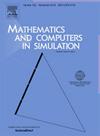具有保护意识的年龄结构HIV/AIDS传播模型稳定性分析及最优干预设计
IF 4.4
2区 数学
Q1 COMPUTER SCIENCE, INTERDISCIPLINARY APPLICATIONS
引用次数: 0
摘要
针对HIV/AIDS传播的年龄异质性,提出了一种包含保护意识的年龄结构模型。我们的研究探讨了稳态的存在性和稳定性与基本繁殖数(或≈0)有关。具体来说,我们证明了当基本繁殖数小于1时,存在全局稳定的无病稳态E0,这意味着疾病将消失。在不存在疾病引起的死亡的情况下,地方病稳态E *成为唯一存在的稳态,并在基本繁殖数大于1时表现出局部渐近稳定性,从而使疾病永久化。为了进一步提高模型的适用性,我们引入了物理距离、教育运动和治疗等控制函数,然后构造了一个最优控制问题,并严格证明了最优控制解的存在性和唯一性。该方法为设计有效的干预策略提供了坚实的理论基础。通过数值模拟来说明我们研究的核心发现,表明年龄变化在艾滋病毒/艾滋病传播动态中的关键作用。值得注意的是,我们的研究结果表明,与在所有年龄组实施统一的策略相比,针对年轻人群进行教育干预以提高自我保护意识的效果要大得多。这一见解强调了针对特定年龄的方法在优化资源分配和最大限度地提高公共卫生影响方面的重要性。本文章由计算机程序翻译,如有差异,请以英文原文为准。
Stability analysis and optimal intervention design for age-structured HIV/AIDS transmission model with protective consciousness
In keeping with the age heterogeneity observed in HIV/AIDS transmission, a novel age-structured model incorporating protective consciousness is introduced. Our research delves into the existence and stability of steady states in relation to basic reproduction number (or ). Specifically, we demonstrate that when the basic reproduction number is less than 1, a globally stable disease-free steady state exists, this implies that the disease will disappear. In scenarios where disease-induced death is absent, the endemic steady state becomes the sole existing steady state and exhibits local asymptotic stability for the basic reproduction number is more than 1, thereby perpetuating the disease. To further enhance the applicability of our model, we incorporate control functions such as physical distancing, educational campaigns, and treatment and then formulate an optimal control problem and rigorously prove the existence and uniqueness of optimal control solution. This approach provides a robust theoretical foundation for designing effective intervention strategies. Numerical simulations are conducted to illustrate the core findings of our study, indicating the critical role of age variability in the dissemination dynamics of HIV/AIDS. Notably, our results suggest that targeting educational interventions to achieve self-protection awareness toward younger populations yields significantly greater effectiveness compared to implementing uniform strategies across all age groups. This insight underscores the importance of age-specific approaches in optimizing resource allocation and maximizing public health impact.
求助全文
通过发布文献求助,成功后即可免费获取论文全文。
去求助
来源期刊

Mathematics and Computers in Simulation
数学-计算机:跨学科应用
CiteScore
8.90
自引率
4.30%
发文量
335
审稿时长
54 days
期刊介绍:
The aim of the journal is to provide an international forum for the dissemination of up-to-date information in the fields of the mathematics and computers, in particular (but not exclusively) as they apply to the dynamics of systems, their simulation and scientific computation in general. Published material ranges from short, concise research papers to more general tutorial articles.
Mathematics and Computers in Simulation, published monthly, is the official organ of IMACS, the International Association for Mathematics and Computers in Simulation (Formerly AICA). This Association, founded in 1955 and legally incorporated in 1956 is a member of FIACC (the Five International Associations Coordinating Committee), together with IFIP, IFAV, IFORS and IMEKO.
Topics covered by the journal include mathematical tools in:
•The foundations of systems modelling
•Numerical analysis and the development of algorithms for simulation
They also include considerations about computer hardware for simulation and about special software and compilers.
The journal also publishes articles concerned with specific applications of modelling and simulation in science and engineering, with relevant applied mathematics, the general philosophy of systems simulation, and their impact on disciplinary and interdisciplinary research.
The journal includes a Book Review section -- and a "News on IMACS" section that contains a Calendar of future Conferences/Events and other information about the Association.
 求助内容:
求助内容: 应助结果提醒方式:
应助结果提醒方式:


